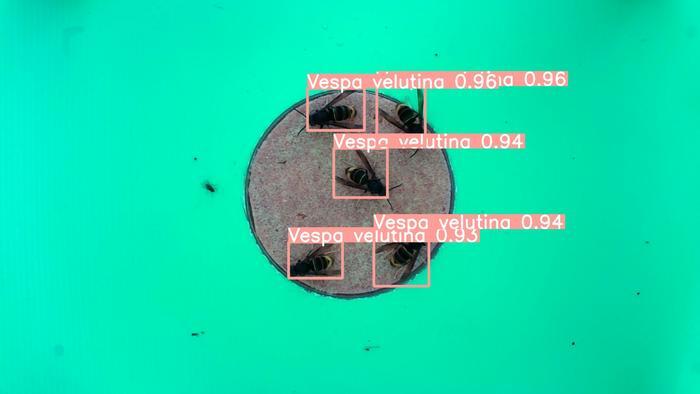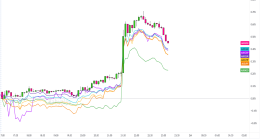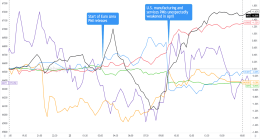EXPERTS are enlisting the help of artificial intelligence (AI) to stop the invasion of killer giant Asian hornets in the UK.
Brits have faced warnings over an influx of the yellow-legged insects after a record number of sightings last year – which was more than the last six years combined.
There were 22 sightings of giant Asian hornets (Vesa Velutina) in the UK last year, and the first glimpse of the deadly critter in 2024 has already been recorded.
In 2022, there were just two sightings.
They have been spotted across Jersey, Guernsey and the smaller Channel Islands.
Francis Russell, the officer behind the Asian Hornet Strategy in Guernsey, warned in October that they could overwhelm Britain next.
READ MORE ON ASIAN HORNETS
But researchers at the University of Exeter have developed an AI-powered system that baits and captures invasive hornets with “almost perfect” accuracy.
The system is called VespaAI, and it could ease the pressure put on Brits to identify and report sightings of Asian hornets themselves.
What are Asian hornets and why are they bad?

Asian hornets – also known as yellow-legged hornets – have already invaded much of mainland Europe, US states Georgia and South Carolina, as well as swathes of east Asia.
They first made their way to Europe when a queen was imported into France with some pottery by mistake.
Since then, the insects have rapidly spread into neighbouring countries like the Netherlands, Belgium, and the UK.
The influx of the non-native species has troubled scientists, conservationists and beekeepers across the continent.
They risk damaging biodiversity and contributing heavily to already dwindling bee and insect numbers.
Asian hornets feed on bees and wasps, so can have a devastating impact on the local insect populations.
They also run a risk to people.
In July 2023 it was reported that 10 people needed medical attention after being attacked by the insects in the Channel islands.
While the UK sits at the edge of the European invasion front, there remains an urgent need for improved monitoring systems beyond the people-led system that is currently in place.
“Unfortunately, the majority of reports submitted are misidentified native species, meaning that the responsible agencies have to manually validate thousands of images every year,” Dr Peter Kennedy, who conceptualised the system, said in a statement.
Most read in Tech
“Our system thus aims to provide a vigilant, accurate and automated surveillance capability to remediate this.”
Dr Kennedy said the AI system can also help save the lives of native species that are often caught in the crossfire with regular traps.
“In some parts of Europe, detection relies on hornet trapping – but such traps kill a lot of native insects, and do little to impact Asian hornet numbers,” he added.
“VespAI does not kill non-target insects, and thus eliminates the environmental impact of trapping, while ensuring that live hornets can be caught and tracked back to the nest, which is the only effective way to destroy them.”
The system sleeps until its sensors detect something of Asian hornet-size, which then triggers an AI algorithm to check if it’s an Asian hornet or native European hornet.
If an Asian hornet is detected, the monitor then sends an image alert to the user, allowing them to confirm the identification before eliminating the target.
“Our goal was to develop something cost-effective and versatile, so anyone – from governments to individual beekeepers – could use it,” Dr Thomas O’Shea-Wheller, of the Environment and Sustainability Institute at Exeter University’s Cornwall campus, said in a statement.
“This study tested a prototype version, and the results were encouraging.
“VespAI shows promise as a robust early warning system to detect Asian hornet ingressions into new regions.”
How to spot Asian hornets

The predators are easily distinguished from other hornets as their legs are black at the top and yellow at the bottom.
Worker Asian hornets tend to reach around 25mm and queens grow to 30mm.
If people come in contact with their lethal sting, it can leave your skin swollen causing a deadly allergic reaction.
To treat a hornet sting you should:
- Wash the area with soap and water and apply an antiseptic to clean the wound and reduce chance or infection
- Place an icepack or cold compress to reduce any swelling
- Elevate the affected area to reduce the chance of swelling
- Avoid scratching the area to reduce the risk of infection or irritation










